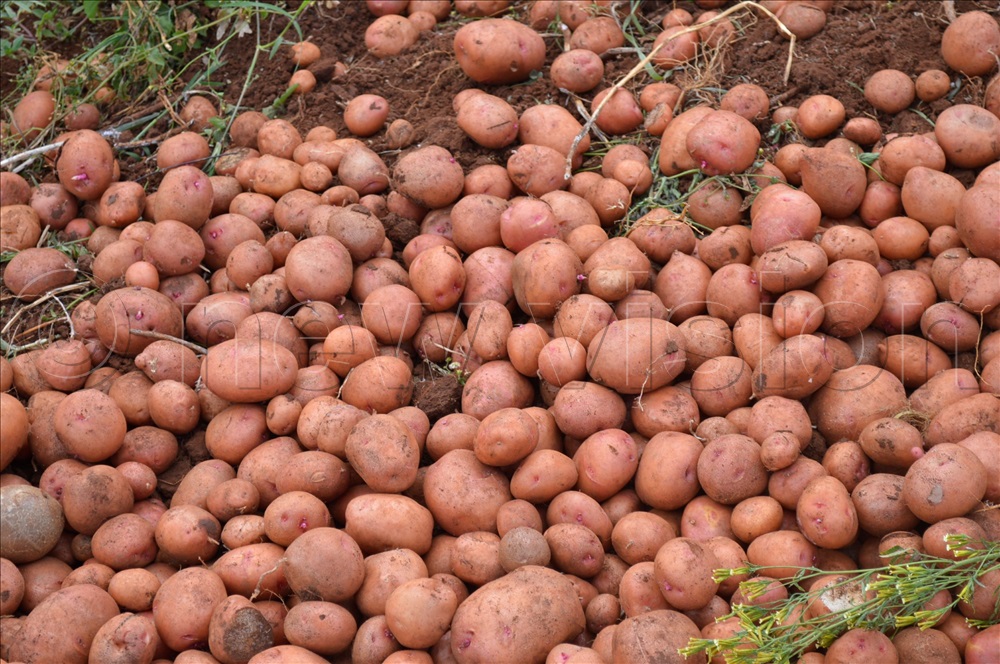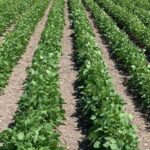Irish potatoes have become an integral part of Kenya’s agricultural landscape, providing a significant source of income for farmers and a staple food for the population. While maize and rice are commonly consumed, Irish potatoes have earned their place as one of the most popular and versatile crops in the country. From being boiled, mashed, and fried to being served as French fries and chips, Irish potatoes are a common feature in Kenyan kitchens, catering to both domestic consumption and a growing export market.
As farming practices evolve and the demand for quality produce rises, Irish potato farming continues to offer immense potential. This article explores the key aspects of Irish potato farming in Kenya, from the major growing regions to the optimal growing conditions, varieties, and market prospects. Whether you are an aspiring farmer or a seasoned grower, this guide will provide you with the knowledge to make informed decisions and succeed in the Irish potato farming industry.
Irish Potato Growing Regions in Kenya
The versatility of Irish potatoes makes them suitable for cultivation in various parts of Kenya. While the crop is grown in almost every region of the country, some areas stand out for their optimal climate and soil conditions. These counties have established themselves as the major producers of Irish potatoes, making them key players in the industry.
1. Nyandarua County: The Leading Producer
Nyandarua is widely regarded as the leading producer of Irish potatoes in Kenya. The county’s fertile highlands, coupled with favorable climatic conditions, make it the perfect environment for potato farming. With vast expanses of land dedicated to the crop, Nyandarua continues to supply both the local and export markets.
2. Kirinyaga and Murang’a
Both Kirinyaga and Murang’a counties boast ideal conditions for growing Irish potatoes. These counties are known for their high-altitude regions and reliable rainfall, contributing to high yields and excellent-quality potatoes.
3. Nakuru County
Nakuru is another key area for Irish potato farming. With its well-drained soils and moderate rainfall, the county has been able to maintain high productivity levels. The region is home to many farmers who have mastered the art of growing high-yielding potato varieties.
4. Elgeyo Marakwet and Trans Nzoia
Elgeyo Marakwet and Trans Nzoia counties are also known for Irish potato farming. These counties benefit from well-distributed rainfall and suitable temperatures for optimal tuber development, making them prime areas for commercial potato farming.
5. Narok, Bomet, and Laikipia
In addition to the counties mentioned above, Narok, Bomet, and Laikipia have emerged as emerging players in the Irish potato sector. With increasing investments in farming technology and good land management practices, these regions are expanding their production capabilities.
6. Bungoma, Meru, Nandi, Uasin Gishu, and Nyeri
Other counties such as Bungoma, Meru, Nandi, Uasin Gishu, and Nyeri have also seen a rise in Irish potato farming. These areas benefit from fertile soils and high altitudes, which allow farmers to produce high-quality tubers for both local and export markets.
Ecological Conditions for Growing Irish Potatoes
Successful Irish potato farming is highly dependent on favorable ecological conditions. Farmers must ensure that their farming practices align with the needs of the crop to achieve maximum yields. The following are key ecological conditions necessary for optimal growth:
1. Altitude: 1500 to 2800 Meters Above Sea Level
Irish potatoes thrive in high-altitude regions. The ideal altitude range for cultivating the crop is between 1,500 meters and 2,800 meters above sea level. This altitude ensures cooler temperatures that are crucial for tuber development.
2. Rainfall: 850-1400 mm Per Year
Consistent rainfall is essential for Irish potatoes to grow well. The crop requires rainfall levels ranging from 850 mm to 1400 mm annually. Farmers in regions with irregular rainfall patterns may need to consider irrigation systems to supplement natural rainfall.
3. Temperature: 16-20°C for Tuber Development
For optimal tuber development, Irish potatoes need cool temperatures ranging from 16°C to 20°C. These temperatures allow for slow, steady growth, leading to the production of healthy and firm tubers.
4. Soil Requirements: Loamy and Well-Drained
Irish potatoes grow best in loamy, sandy soils that are well-drained and rich in organic matter. The soil should have a pH of 5 to 6.5 for optimal growth. Farmers are advised to test their soil regularly to ensure it meets these criteria.
Varieties of Irish Potatoes in Kenya
Kenya has a wide range of Irish potato varieties, each suited to different climatic and ecological conditions. Some varieties are known for their disease resistance, while others are favored for their high yield potential. Below are some of the most popular varieties grown in Kenya:
1. Shangi
One of the most popular varieties in Kenya, Shangi is known for its high yield potential and adaptability to different growing conditions. It is a fast-maturing variety, making it ideal for farmers seeking quick returns.
2. Saviola
Saviola is another popular variety known for its resistance to common potato diseases. It produces high-quality tubers that are preferred in the local market due to their excellent taste and texture.
3. Musica and Royal
These two varieties are known for their robust growth and resistance to pests and diseases. Musica produces large, smooth tubers, while Royal is favored for its high yield and versatility.
4. Other Varieties:
Other varieties grown in Kenya include Sitra, Purple Gold, Mayan Gold, Panamera, Evora, Zafira, and Ambition. Each variety offers distinct advantages, including improved disease resistance, higher yields, and better storage qualities.
Planting and Land Preparation
Proper land preparation is crucial for successful Irish potato farming. Before planting, farmers need to prepare the land adequately and choose high-quality seeds to ensure healthy and productive crops. The following steps outline the process of planting Irish potatoes:
1. Seed Selection
Selecting disease-resistant, high-yielding seed varieties is key to ensuring a successful harvest. Farmers should choose certified seeds from reputable suppliers to reduce the risk of planting infected tubers.
2. Land Preparation
Land should be cleared of any weeds, debris, or old crop residues. Farmers are encouraged to plough and harrow the land to create a fine seedbed for planting. Hilled rows should be prepared, with 75 cm spacing between rows and 30 cm between individual seeds.
3. Fertilizer Application
To promote healthy growth, Irish potatoes require nutrient-rich soils. At planting, farmers should apply 50 kg of DAP (Diammonium Phosphate) per acre to provide essential nutrients. Top dressing with CAN (Calcium Ammonium Nitrate) should be done around 3 to 4 weeks after planting. Additionally, NPK fertilizers can be used for further feeding.
Harvesting and Yield Potential
Irish potatoes are typically ready for harvest after about 4 months, although the exact time depends on the variety. Signs of maturity include the yellowing of leaves and the drying of stems. Farmers should aim to harvest their potatoes during dry weather to ensure the tubers dry quickly and are free of excess moisture.
On average, an acre of Irish potatoes can yield between 30 to 100 bags, depending on factors such as variety, soil quality, and weather conditions. It’s crucial to handle harvested potatoes carefully to prevent bruising or damage, which could reduce their market value.
Market for Irish Potatoes in Kenya
The demand for Irish potatoes in Kenya is consistently high. Not only are they a staple food in many households, but they are also in demand in restaurants, hotels, schools, and hospitals. In urban centers like Nairobi, the price per kilogram of Irish potatoes can range from Kshs 50, although it varies depending on the season and region.
Local Market
Irish potatoes are sold in local markets, often through middlemen or directly to consumers. Farmers can supply their produce to local grocery stores, wholesalers, and retail outlets. The crop is also commonly sold at roadside stalls, where it’s popular among consumers for home cooking.
Export Market
With the rise of international demand, Irish potatoes have become a key export product for Kenya. Exporters such as Selina Wamucii have played a significant role in supplying Kenyan potatoes to regional and international markets. The demand for high-quality potatoes in countries like Uganda, Rwanda, and Tanzania continues to grow, making the export market an increasingly lucrative avenue for Kenyan farmers.
Opportunities and Challenges in Irish Potato Farming
Irish potato farming in Kenya holds significant potential for both new and experienced farmers. With high domestic demand and growing export opportunities, the sector offers multiple avenues for profit. However, challenges such as climate variability, pest infestations, and market fluctuations can pose risks for farmers.
Farmers who invest in good land preparation, quality seed selection, effective pest management, and proper fertilization techniques are more likely to succeed in Irish potato farming. With continued support from the government and agricultural organizations, Kenyan farmers can capitalize on the growing demand for Irish potatoes, contributing to the country’s food security and economic growth.





